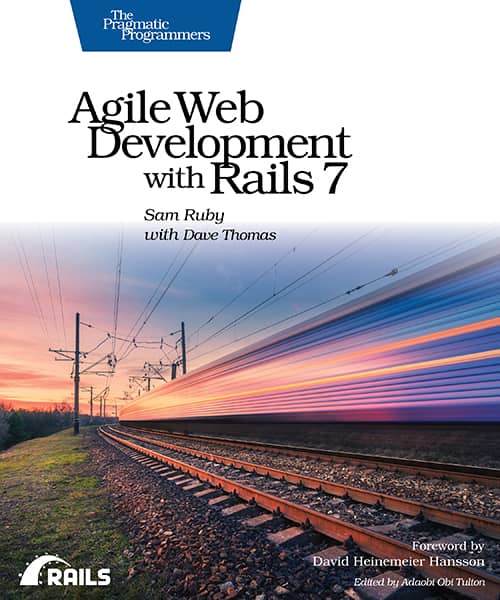Sam Ruby @rubys
with Dave Thomas @pragdave
edited by Adaobi Obi Tulton @aotulton
Ruby on Rails helps you produce high-quality, beautiful-looking web applications quickly—you concentrate on creating the application, and Rails takes care of the details. Rails 7 brings many improvements, and this edition is updated to cover the new features and changes in best practices.
We start with a step-by-step walkthrough of building a real application, and in-depth chapters look at the built-in Rails features. Follow along with an extended tutorial as you write a web-based store application. Eliminate tedious configuration and housekeeping, seamlessly incorporate JavaScript, send and receive emails, manage background jobs with ActiveJob, and build real-time features using WebSockets and ActionCable. Test your applications as you write them using the built-in unit, integration, and system testing frameworks, internationalize your applications, and deploy your applications easily and securely.
Rails 1.0 was released in December 2005. This book was there from the start, and didn’t just evolve alongside Rails, it evolved with Rails. It has been developed in consultation with the Rails core team. In fact, Rails itself is tested against the code in this book.
Sam Ruby is a member of the Board of Directors of the Apache Software Foundation, previously co-chaired the W3C HTML Working Group, and has made significant contributions to many open source projects and standards.
Dave Thomas, as one of the authors of the Agile Manifesto, understands agility. As the author of Programming Ruby, he understands Ruby. And, as an active Rails developer, he knows Rails.
- Full details: Agile Web Development with Rails 7 by Sam Ruby
- View this book’s portal and details on how to post errata and suggestions here.
*Don’t forget you can get 35% off with your Devtalk discount! Just use the coupon code “devtalk.com" at checkout ![]()




